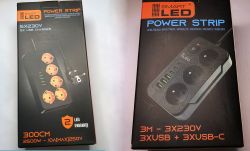ferbulous wrote:
Currently i have 3 device
CB3S - UART works, mac address changed causing odd issues not connecting to wifi even after re-flashing
CB3S - UART works, but no response/connect to wifi
Are you aware about the fact that MAC addresses should be unique? If you happen to have two devices with the same MAC, you will get strange connect issues. WiFi will not connect or will be unstable. Page might load once or two and then will stop responding.
Please disconnect other "empty MAC" devices from router before trying or try with different router.
You can also try this dump - it's full 2MB, it will override whole config, lfs, rf and MAC partition:
(WARNING! THIS IS FOR N ONLY! BK7231N! Not for T! Flashing to T will break T!)
FullFW_tem...roblem.zip Download(843.29 kB)
Flash it like QIO, at offset 0, it's full image of N device.
If it works and connects to WiFi, then use "Restore RF partition" button in Web App (flash Tab) and change MAC by WWW GUI to something unique.
ferbulous wrote:
WB3S - UART not working,
Can I use bk7231_spi_flasher.py script for N device?
I didn't test that, but please try and report here results.
For N, just use flasher to flash whole QIO image for N platform.
But WB3S i T.
Also, if UART works, there is no need to use SPI flasher.
ferbulous wrote:
- set CEN to low
- wait 1 second
- set CEN to high
Do i manually set CEN to low & high or this is done by the script?
Everything is done by the script, but you have to remember to select correct CEN GPIO in the code (you might have used different GPIO than me).
You can use any GPIO for CEN for my script, everything will work as long as you have chosen the same GPIO in code.
You can check if your GPIO selection in code is correct by temporary disconnecting CEN of BK and connecting LED + resistor to that Raspberry pin of your choice and to VDD. If LED blinks, then you have correctly configured pin. Of course remember to connect LED polarity correctly.





![[BK7231T] My HTTP server, configurator, MQTT support from Home Assistant [BK7231T] My HTTP server, configurator, MQTT support from Home Assistant](https://obrazki.elektroda.pl/7894590500_1667587217_thumb.jpg)
![[BK7231T] My HTTP server, configurator, MQTT support from Home Assistant [BK7231T] My HTTP server, configurator, MQTT support from Home Assistant](https://obrazki.elektroda.pl/3915446700_1667627497_thumb.jpg)
![[BK7231T] My HTTP server, configurator, MQTT support from Home Assistant [BK7231T] My HTTP server, configurator, MQTT support from Home Assistant](https://obrazki.elektroda.pl/8789047700_1668192733_thumb.jpg)
![[BK7231T] My HTTP server, configurator, MQTT support from Home Assistant [BK7231T] My HTTP server, configurator, MQTT support from Home Assistant](https://obrazki.elektroda.pl/5709474400_1668199437_thumb.jpg)
![[BK7231T] My HTTP server, configurator, MQTT support from Home Assistant [BK7231T] My HTTP server, configurator, MQTT support from Home Assistant](https://obrazki.elektroda.pl/4799153500_1668258297_thumb.jpg)